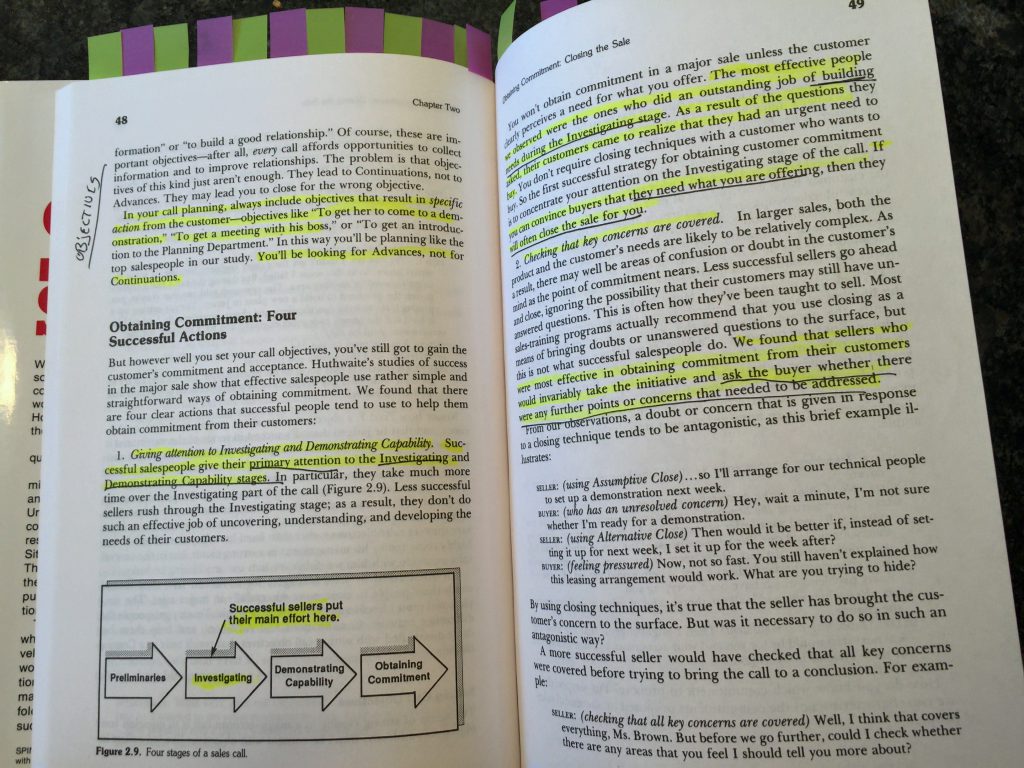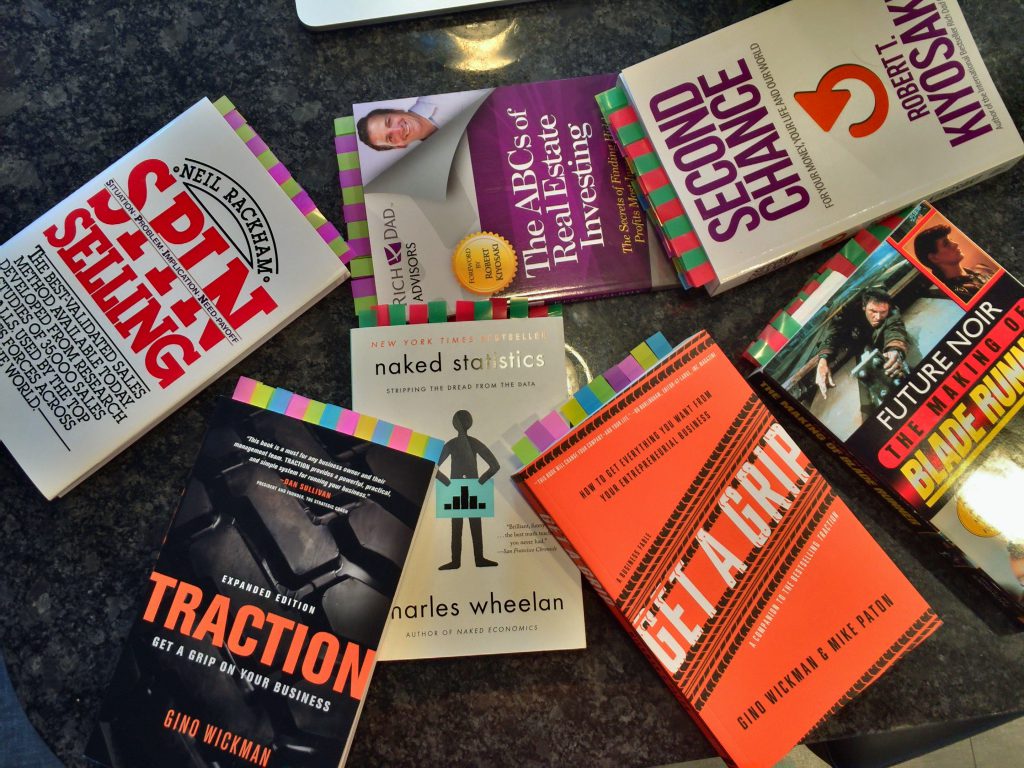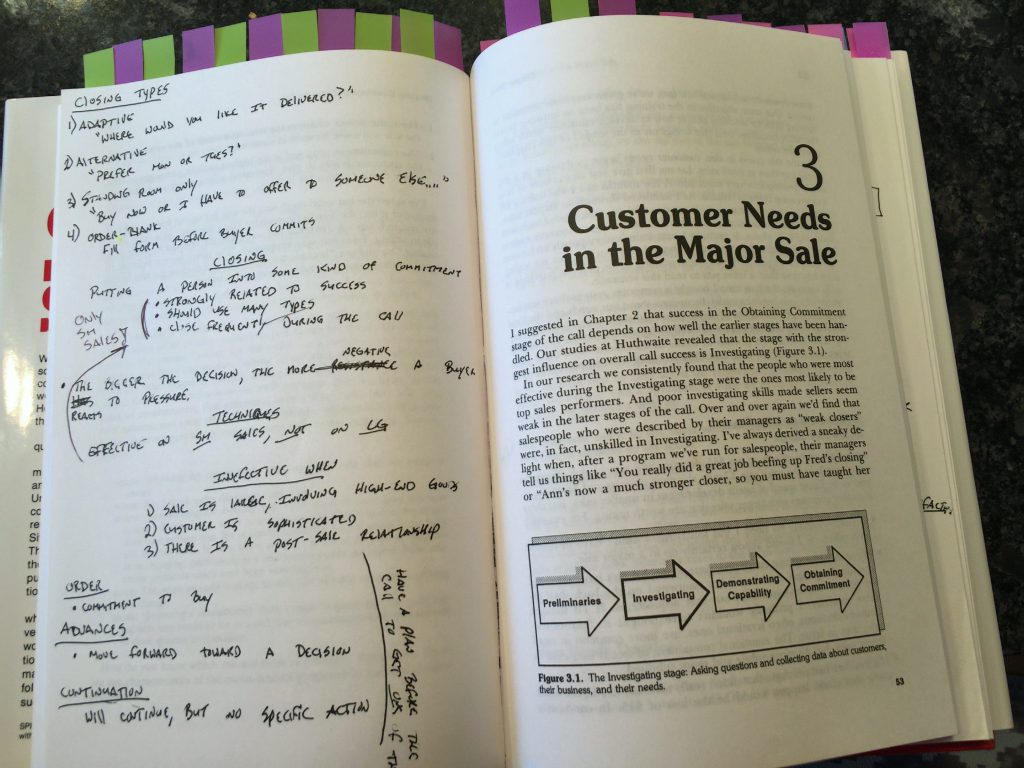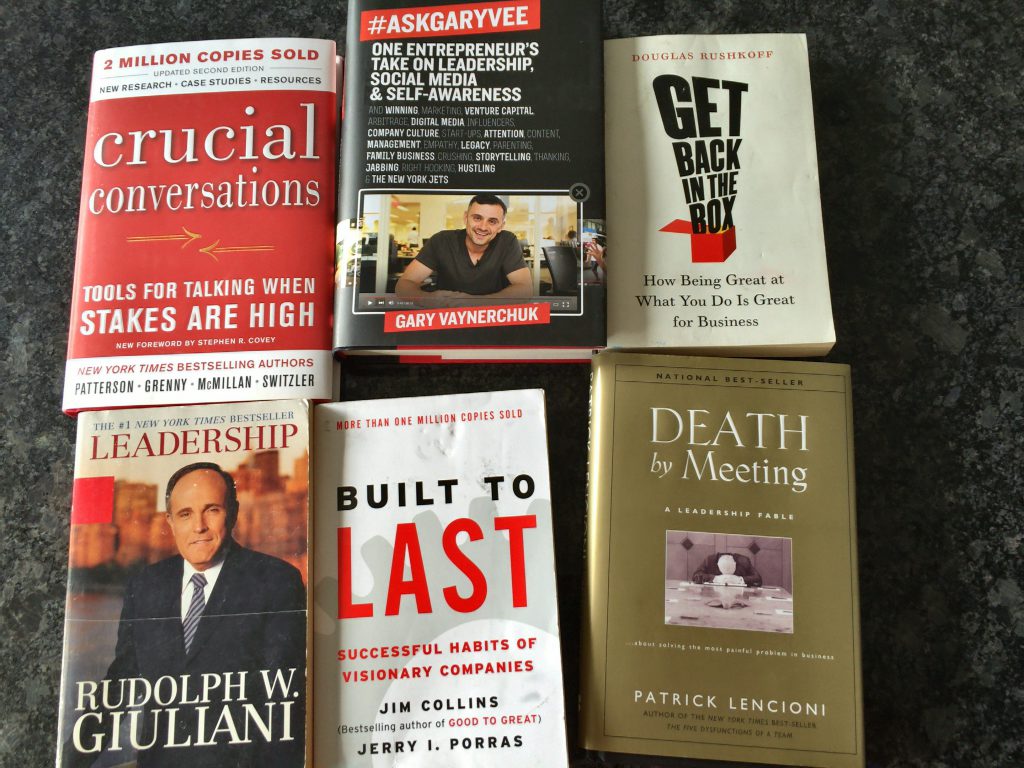- Carry three key items: Highlighter, pen, & post-its
- You remember what you write
- Create an outline at the end of each chapter
- Share it with others
- Keep track of what you read on GoodReads.com
I read voraciously. I try to go through one book per week, either in audio form through Audible, or paperback. When I’m at the gym or driving, audible is my way of zoning out from the day, and learning something new. No work, stress, just learn. I do find that I absorb much more information when I take time to read the paperback, though.
Looking back, I’m sure most of us have a decent library of books we’ve read, but cannot recall many facts from the book. Why is that?
It’s probably because we just zoom past the books, hoping to remember everything that we read — but that’s not going to happen. In truth, it would not be possible to remember every word you read. What you can do however, is highlight the important parts of a book, and remember those.
Why do this?
My goal with this post is to get you to remember what you read, by taking a more active role in your book consumption.
People commonly confuse price with value. Price is the amount paid for a product, while value is the utility you receive for making use of that product.
I don’t care about the $8 I spent on a book, but I do care about the time I put into it, as that is my one finite resource. Why waste your time reading a book if you aren’t going to get any value out of it and remember what you read?
I’m a programmer, which essentially boils down to this: A person who has a desire to be the most efficient min / maxer possible. Get the max value for the minimum amount of work. The process below is important because it allows you to extract the maximum value from a book.
How long does this take?
If It takes me 4 hours to read a book, then (roughly) it will take me the following amount of time to do these parts for the entire book:
- Highlight / draw/ post-it: 45 min
- Outline: 1 hour
- Blog / share: 30 minutes

Carry three key items
- Sharpie, post-it, & pen
- Consider having a different color post-it for each “category”
I carry these everywhere I go, along with my previously mentioned moleskin notebook, which I also illustrated in another post on how I use it to take notes. Highlight key words or phrases that you’ll want to include in your outline at the end of the chapter.
My post-its are generally 5 colors, and I really don’t have a system for what each one means, but I should align it to something like:
Blue: Important graph / chart / illustration
Yellow: Quote
Purple: Key points
For right now, I simply place the post-its on pages that offer information I want to return to.
You remember what you write
- Active vs passive learning
- Don’t remember nearly as much by just listening
- I find that listening 3x helps me remember
- Fill the margins, draw diagrams
People are more likely to recall what they did when they have to write it down and reflect on it. I’m currently reading Andrew S. Grove’s (former CEO of Intel) book High Output Management, and he illustrates why he has managers create written reports, which is equally applicable here:
“So why are written reports necessary at all? As they are formulated and written, the author is forced to be more precise than he might be verbally. Hence the value stems from the discipline and the thinking the writer is forced to impose upon himself.”
If I’m listening to an audiobook or educational video on YouTube, I find that the magic number for me is three. If I listen to it three times, I remember the information far better than if I only did it once, but also because I can almost recite what they are saying — a great recollection tool.
There is an old marketing adage, The Rule of Seven, which states that consumers need to see an ad seven times before they take action, but because you aren’t having to cut through clutter and compete with a barrage of ads while you listen to audio, I find that three works for me.
Create an outline of the book at the end of each chapter
- Have one key takeaway
- Include any important diagrams that you can recreate
You don’t need to copy down everything that you highlighted, underlined, or drew during the chapter. The point of the outline is to organize your thoughts in a manner that would allow you to extend this into a longer document, such as a blog post.
Slim down the notes you took in the margin and words you highlighted even further, by boiling it down to the bare essentials. What is the key point of each chapter? Your notes don’t necessarily have to be something which others can comprehend (have you seen my handwriting?), but simply a way for you to remember what you read.
Share it with others
- Post it on your blog, medium, LinkedIn, or wherever you bought it
- Then share that post on Twitter, Reddit, Facebook
There’s no sense in keeping all of this information to yourself. You can now provide value to others, which will encourage them to come back to you, or your work, more frequently.
I blog pretty often, and use a number of WordPress plugins to help here. Book Review is a plugin that allows me to easily format my reviews, while providing a cover image, and details for the reader. Here is an example of a recent review that I did.
Medium is a newer, popular platform for blogging. I’ll often cross-post my work between my personal blog and Medium, and there is an a tool for importing your entire blog.
The benefit to using something like medium, is that it already has a built in audience, so it can drive additional traffic to your content there.
LinkedIn allows you to write long-form posts, so I’ll frequently copy + paste my content there, too. All of this takes only a few minutes.
Keep track of what you read on GoodReads.com
- Gamify reading
- Keeps you engaged, and people responding to your content encourages more writing
For the longest time I resisted GoodReads, as I thought it was a silly idea to share the books I was reading. But after starting it a few months ago, I’m hooked. I also realize how often I read, too.
I’ll frequently post my reviews on GoodReads as well. I find it’s a good platform for discovering new books, too. Here’s my profile, and feel free to share yours with me.
-----------------------
@DaveVoyles




